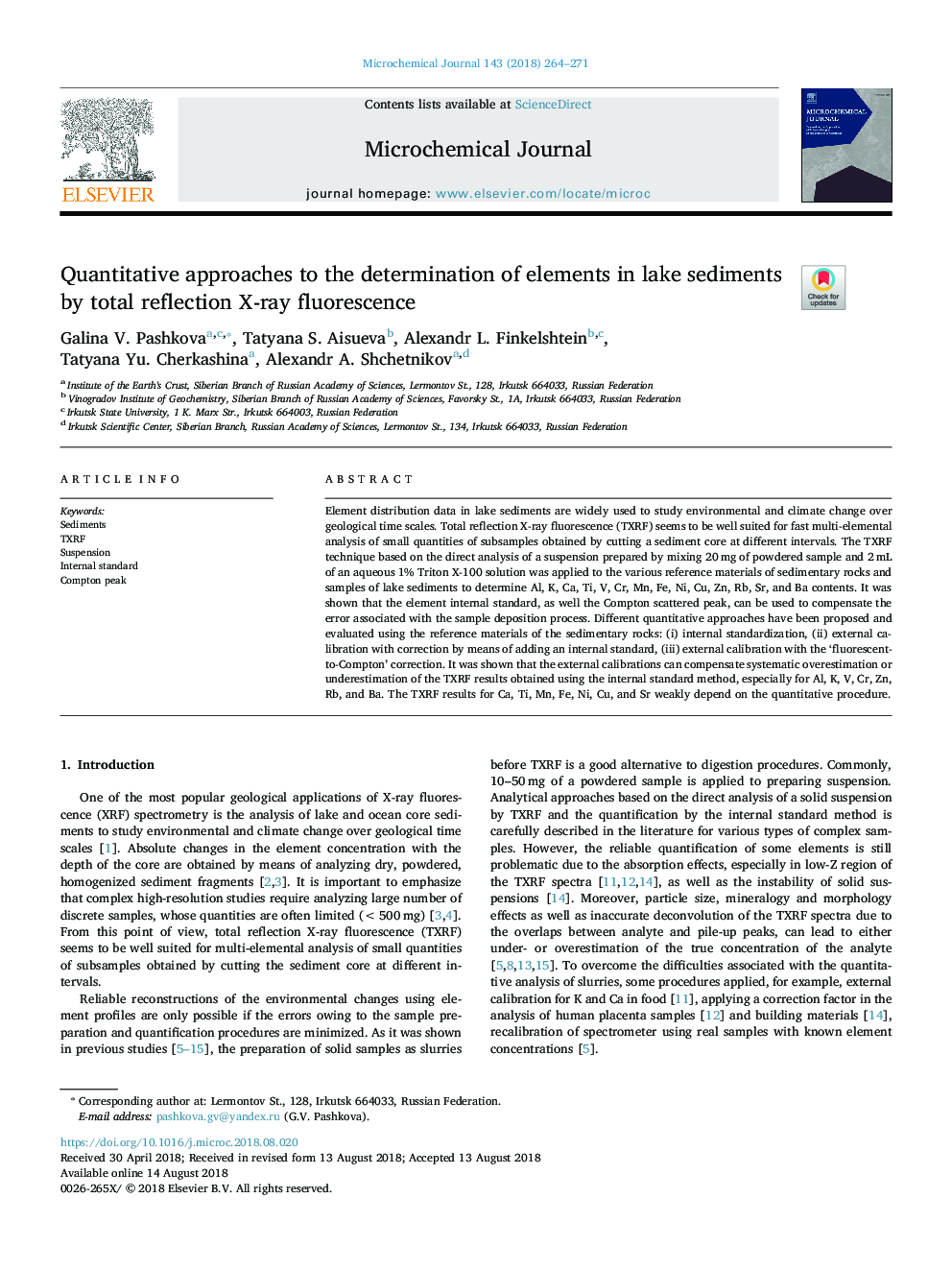| Article ID | Journal | Published Year | Pages | File Type |
|---|---|---|---|---|
| 7639975 | Microchemical Journal | 2018 | 8 Pages |
Abstract
Element distribution data in lake sediments are widely used to study environmental and climate change over geological time scales. Total reflection X-ray fluorescence (TXRF) seems to be well suited for fast multi-elemental analysis of small quantities of subsamples obtained by cutting a sediment core at different intervals. The TXRF technique based on the direct analysis of a suspension prepared by mixing 20â¯mg of powdered sample and 2â¯mL of an aqueous 1% Triton X-100 solution was applied to the various reference materials of sedimentary rocks and samples of lake sediments to determine Al, K, Ca, Ti, V, Cr, Mn, Fe, Ni, Cu, Zn, Rb, Sr, and Ba contents. It was shown that the element internal standard, as well the Compton scattered peak, can be used to compensate the error associated with the sample deposition process. Different quantitative approaches have been proposed and evaluated using the reference materials of the sedimentary rocks: (i) internal standardization, (ii) external calibration with correction by means of adding an internal standard, (iii) external calibration with the 'fluorescent-to-Compton' correction. It was shown that the external calibrations can compensate systematic overestimation or underestimation of the TXRF results obtained using the internal standard method, especially for Al, K, V, Cr, Zn, Rb, and Ba. The TXRF results for Ca, Ti, Mn, Fe, Ni, Cu, and Sr weakly depend on the quantitative procedure.
Related Topics
Physical Sciences and Engineering
Chemistry
Analytical Chemistry
Authors
Galina V. Pashkova, Tatyana S. Aisueva, Alexandr L. Finkelshtein, Tatyana Yu. Cherkashina, Alexandr A. Shchetnikov,
